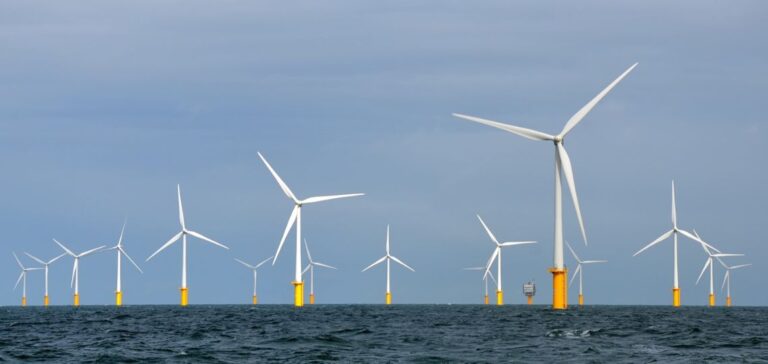The Japanese government announced Friday that it has selected five sites off Hokkaido as “promising areas” for offshore wind farm development, marking the second step in a three-part selection process.
The decision comes as Japan seeks to accelerate the development of renewable energy in order to achieve its goal of carbon neutrality by 2050. The newly designated promising areas are located off Ishikari, Ganu-Minamishiribeshi, Shimamaki, Hiyama and Matsumae, on the northern Japanese island of Hokkaido.
These five sites were chosen after a government study confirmed their ability to connect to the power grid. The five areas were promoted from the “preparatory areas”, which are the first step in the three-step selection process. The government has defined the appropriate scale of generation for the areas and has tentatively secured the necessary grid capacity through its own study. The new study process, called the “grid security scheme,” was introduced last year to speed up the development of wind farms, an industry ministry official said.
To become eligible for public auction, a “promising area” must be promoted to “promotion area” status that meets all the criteria set by a local law. The government will separately announce the outcome of its annual wind farm area selection process this summer, the ministry official said. This will identify some areas as promotional, some as promising and some as preparatory.
Offshore wind is a key driver of Japan’s renewable energy expansion, but the auction process was suspended for nine months last year as the government needed to revise the rules, after criticism from companies about the lack of clarity surrounding the bidding process after the first major round of auctions.
Japan, which has considerable offshore wind potential, is determined to exploit this resource to diversify its energy mix and reduce its dependence on fossil fuels. The designation of these five promising sites is a critical step in achieving this goal. By accelerating the development of offshore wind farms, Japan is firmly committed to the energy transition and thus contributing to the global fight against climate change.
Japan is aware of the importance of offshore wind energy and continues to implement policies and measures to promote its development. By encouraging the use of renewable energy, the country can reduce its dependence on fossil fuels, reduce its greenhouse gas emissions and promote a more sustainable economy.
In conclusion, the designation of five promising sites off Hokkaido for offshore wind farm development marks a significant step forward in Japan’s renewable energy strategy. The country is positioning itself as a major player in the offshore wind sector, by relying on its natural potential and by implementing favorable policies. These actions contribute to the achievement of Japan’s carbon neutrality targets and to the global fight against climate change. It now remains to closely follow the next steps in the selection process and the concrete steps that will be taken to promote these promising areas as offshore wind farm development sites.






















